

Construction change orders are a critical part of the payment process on a project when the scope changes. On this page, you can download free change order templates for use on any type of project. Choose the template based on your role on the project and the type of construction contract you are working under.
Table of Contents
This construction change order template (available in Google Docs or PDF) is designed for use on any project where the contract doesn’t require a specific form.
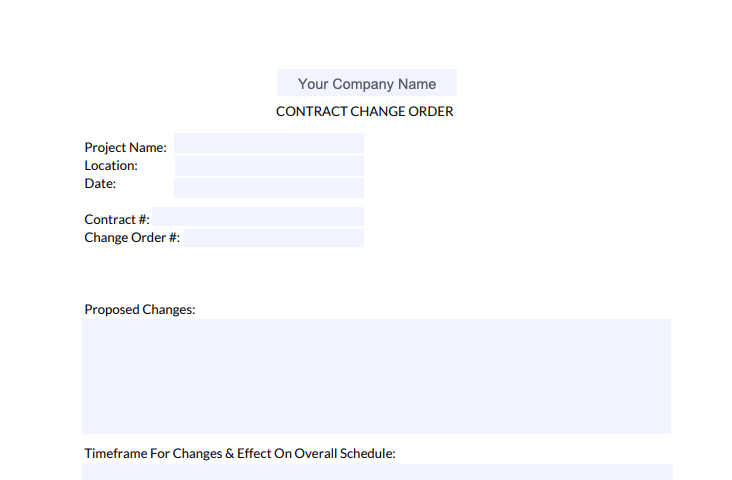
A fixed sum contract has a negotiated price included in the contract, so any changes that affect the price will need the sign-off of the GC, owner, and/or architect. These templates are generally best used with fixed price contracts or lump sum contracts.
The templates are available in Google Sheets, Microsoft Excel, and PDF formats.
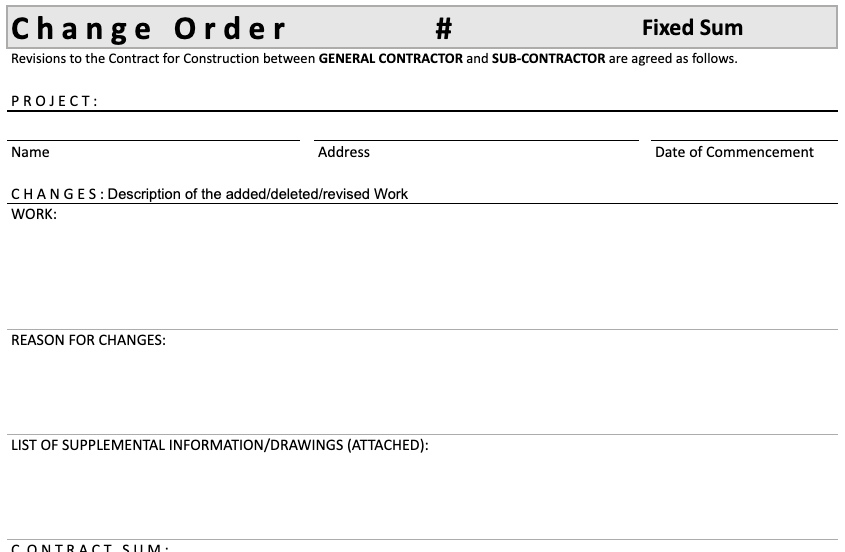
Download a free fixed sum change order template for subcontractors to use when requesting a change or seeking approval from the GC.
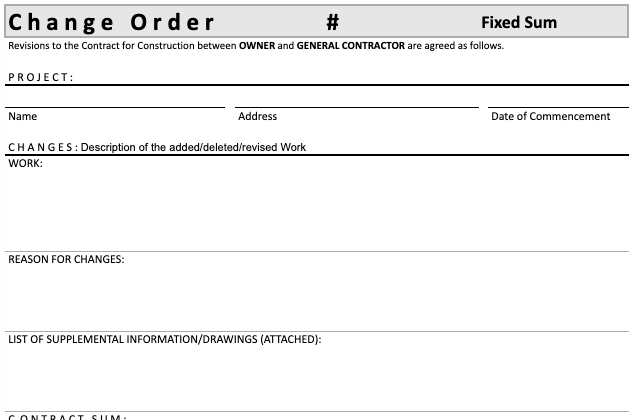
Download a free fixed sum change order template for general contractors when seeking change order approval from the owner or architect.
Because the value of a time & materials contract is calculated differently, making a change requires slightly different information. These construction change order forms were created to simplify the change order process under a T&M contract.
These free templates are available in Google Sheets, Microsoft Excel, and PDF formats.
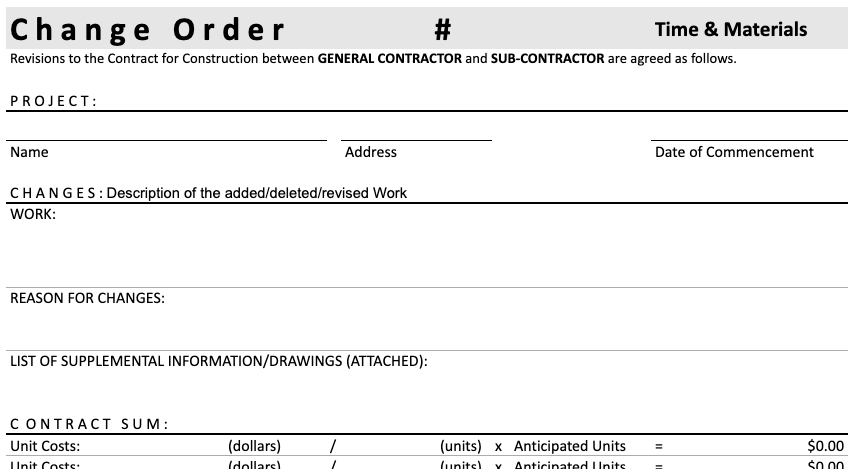
Download a free T&M change order template for subcontractors to use when requesting approval from the GC.
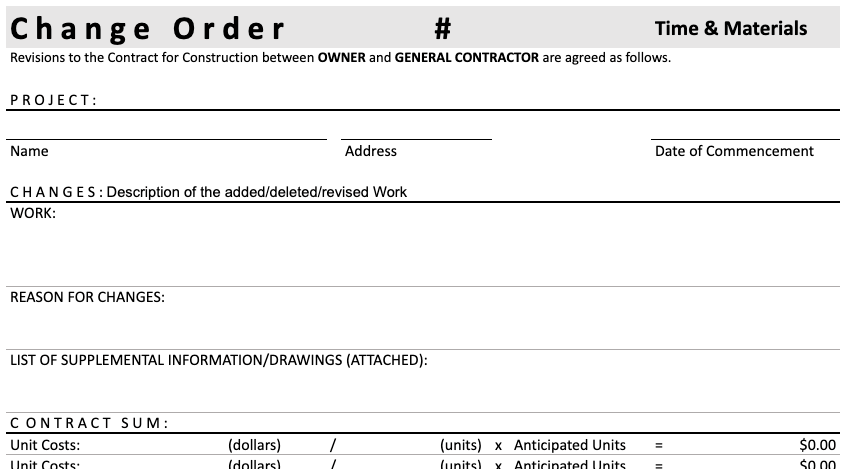
Download a free T&M change order template for general contractors to use when requesting approval from the owner or architect.
A change order documents any revision to the scope of work that affects cost or time. So, the change order itself documents those changes by establishing the following as clearly as possible:
The emphasis is often placed on the monetary changes, but many of the disputes over changes have to do with schedule delays or changes. The dates agreed to in construction change orders can affect:
These can even be affected by the timeliness of the responses to proposed change orders. Time, as they say, is money. And using a clear change order template can save you a lot of time.
Everyone with a contract to fulfill — general contractors, subcontractors, and sub-subcontractors — should have an approved change order before they do any work which is not called out in the initial contract documents, provided that work affects the cost or schedule of the contract.
On projects that use AIA contract documents, you may be required to use the AIA G701 Change Order. However, the GC or owner may approve the use of another template as long as it contains the required information.
An approved change order becomes part of the original contract, with all the protections that contract provides. It will affect your ability to submit a payment application. If payment is delayed, having an approved change order will protect your right to file a mechanics lien.
In large commercial work, the construction change order process is often spelled out in the General Conditions of the Owner/Contractor agreement. Typically, a contractor will issue a Request for Information (RFI) to get the ball rolling on a change.
Then, the change order itself is issued by the Architect, based on numbers negotiated with the contractor. On smaller commercial projects and residential work, there are often fewer systems in place and a handshake is sometimes as formal as changes get.
Operating on a handshake deal is a big risk to your bottom line when changes are afoot. It is critical to have a paper trail and a signed agreement before you perform any work. This is where a good template comes in handy.
Anyone who is party to a contract can submit a construction change order. And the easiest way to do it? Simply fill out a change order template and submit it. A good template will help you remember to include all relevant information, will formalize responses, and set expectations in a format that’s easily readable to everyone involved.
Ideally, it will be approved and signed, allowing you to do the work with the assurance that you’ll be paid for it. And at the very least, you will have documented the change and its anticipated cost for negotiation at a later date. In any case, the sooner a change order is initiated and approved, the sooner you can get paid for the work.